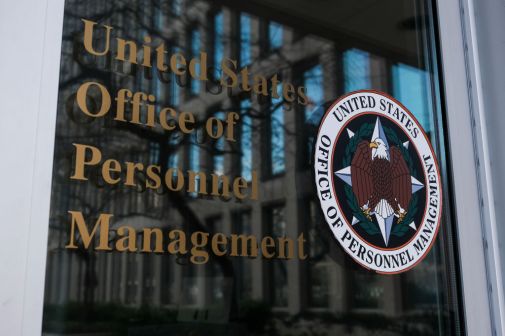The little bots that could

Autonomous weapons and self-driving cars might get all the press, but behind the scenes a quiet pivot to using simple software bots to automate is also taking root in government agencies.
Experts say process robotics — a type of system and software automation, very different from traditional mechanical robotics — could revolutionize government agency work by freeing up federal staff to work on mission-based work instead of rote tasks.
At least five agencies have worked with Deloitte Consulting on nine proofs of concept for the technology so far, seeking to get autonomy into their systems to replace human work on highly repeatable rules-based tasks, Marc Mancher, principal and federal process robotics leader at Deloitte Consulting LLP, told FedScoop.
These process bots can work around the clock — where typically a person can only work eight or ten hours — opening email attachments, cutting and pasting structured data, following if-then rules, making calculations, logging into applications, collecting social media, extracting structured data, scraping data from the web, and more, Mancher said.
Federal agencies are embracing the technology, Terry Weipert, executive vice president of government at Sutherland Global Services, told FedScoop — now, they are just trying to figure out how to implement it, she said.
Agencies can put the software on an office computer, in a virtual environment, in the cloud or wherever is most convenient for the IT department, Mancher explained.
“The reason that it’s taking hold so fast is that it’s quick to implement, tremendously high-impact and it’s low-cost,” he said. “In my career I’ve never seen anything like it.”
Deloitte’s proofs of concept use the bots to automate finance, claims and even laboratory processes.
“One of our clients who we built a proof of concept for had data scientists that were taking data out of emails and [Microsoft] Excel and putting them into their database… they weren’t actually doing real scientific work,” Mancher said. “And this POC is going to enable the scientists to get away from the computer, doing the rudimentary, and get them back to doing the scientific work. So that’s heart of mission.”
Going forward, Mancher said some of the company’s proofs of concept for agencies are going into production reviewing security to obtain authorization to operate. Deloitte is software neutral, he said, and works as the systems integrator to help agencies figure out where they can use the technology, while assisting with implementation.
In one example, Deloitte worked with a federal agency to automate a specific process and found that bots could augment 87 percent of the staff on that work, Mancher said.
And it seems the federal market for process automation is only heating up. Mancher told FedScoop he does two or three demos of the technology a week to federal clients.
Weipert says the technology can solve what she calls the “swivel chair model” — the job of entering information into one system and swiveling around and entering into another system the same information.
Mancher noted a similar phenomenon: Bots’ ability to reach across disparate legacy systems.
Some agencies, he said, “hire support contractors because IT systems are not integrated. In other words, you’re hiring somebody to… sit and look for an email coming in and to move it to another system because there’s not right now enough time or money in the IT budgets to integrate the systems.”
But with a bot, “you can integrate it and you don’t need support contractors,” he said. “And that money can go back to mission.”
President and Co-Founder of the Institute for Robotic Process Automation Raheem Hasan said implementing the bots is not usually a big IT lift and doesn’t require programming skills to implement.
“One of the intriguing things that makes this technology easy to adopt is for many of these tools it doesn’t require you to do programming,” Hasan told FedScoop. “A business analyst who does the process today, with some modest amount of training, can actually kind of train the robot on how to do their job.”
Trusting a software bot to do the work of humans may seem irresponsible, but Mancher noted that bots actually allow you to know what work that was done each day and check for quality.
“If you have 30 people doing something, at the end of the day there’s no report on what they did,” he said. But with a bot, “you actually now know what happened because the bot produces a report on what happened during the day so you actually have more accountability.”
However, Weipert said the government is facing some challenges in figuring out how to procure the technology. Sometimes the bot would theoretically reach across contracts to accomplish tasks or collapse several contracts into one. And that can be a confusing landscape to navigate.
She also noted that in some cases, agencies have not adequately documented the process flow to figure out where best to even implement them.
“Especially in the legacy world, they don’t quite understand maybe all the data feeds in some cases, they haven’t documented the process flow. You have to do that — that is a first step,” she said. “Don’t go out and buy the tools if you don’t know how you’re going to use it.”
Despite all these challenges, Weipert said, “it’s a big thing for the government to do and I think they want to do it… I think they’re all looking at it.”
With robotics the usual concern that comes to mind is jobs. But Mancher said federal government needs more resources to fulfill mission, not to eliminate jobs.
“In the commercial industry this is being used to increase profit on the bottom line and take jobs out,” he said. “Or it’s being used to re-onshore jobs that we used to be offshoring…Federally, it’s a totally different value proposition.”
He added: “In the federal government…because of unfunded mandates or constrained budgets, what we have are areas where we can’t meet the service level of an organization because we have uneven workload.”
Mancher said bots can also be used to fill need during peak periods instead of staffing up and then having idle government workers during less busy times.
Going forward, Hasan noted, “the federal government not really being able to take advantage of offshoring, I think technologies like this are really going to be of huge value to them. You’ve got a lot of people doing rote, repetitive types of work and they need to be freed up from that. This can help them do that.”






